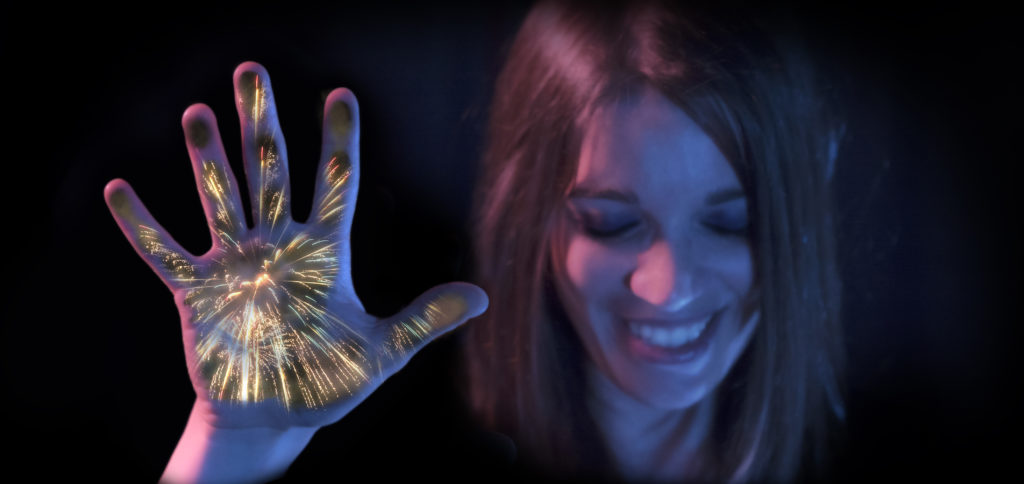


The loud boom of a firework is an exciting stimulus, but those colorful explosions are primarily a visual experience. Disney Research has been working on a “Feeling Fireworks,” a display that offers haptic feedback—vibrations a person can feel—to help translate the pyrotechnic display for visually impaired guests. According to Principal Research Scientist Paul Beardsley, it’s part of his group’s work to create “an aesthetic technology for the blind and visually impaired community.”
Haptic feedback to aid the blind, or people with low vision, is by no means a new concept and has been on the rise in the past few years. You can find touch-based stimuli tech in everything from shoes that vibrate to guide a blind person as they walk, to the Sunu wristband that shakes to give directions. Disney’s design, however, is specifically focused on translating the experience of fireworks to people who can’t see them.
The technology consists of a latex screen that’s roughly 3 feet x 3 feet with a projector in the front and a series of water jets in the back. A basic Arduino computer controls the spray characteristics of the jets, which essentially draw the shapes of the fireworks on the screen so users on the other side can feel them through the flexible surface. A projector at the front of the screen can also create a corresponding image.

The prototype also uses a Microsoft Kinect camera array to track the movements of the user, which makes the display interactive, which is impossible—or at least certainly ill-advised—with traditional explosive displays.
Disney Research tested the tech on a small group of 18 sighted subjects, and found that they had a 66 percent success rate in matching a haptic firework to a video representing the same shape and duration.
This isn’t the first time Disney has experimented with haptic feedback for interactive displays. In 2013, the company showed off a technology called Aireal (get it?) that used air vortices and ultrasonic pressure radiation to make virtual objects on a screen feel real.

There are also a number of traditional touchscreens that offer haptic feedback that corresponds to
Right now, there are no plans to implement the fireworks device in any of the Disney parks, but the paper does speculate on some possible uses for similar haptic tech for its visitors that go beyond vision. For instance, Beardsley says “the use of balloons by deaf people to feel music suggests that the screen might also be a basis for a tactile-visual musical experience for the deaf community.”
